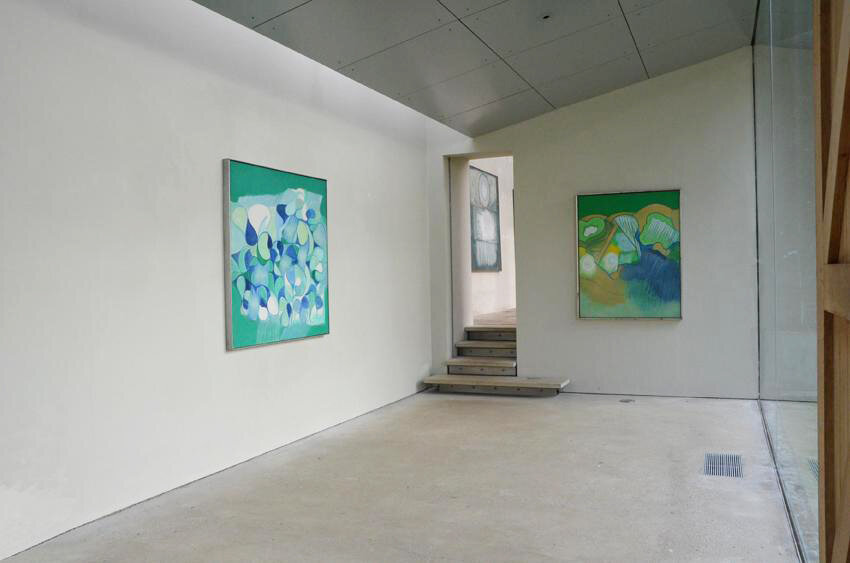Installation view, Ceri Richards: Late Paintings, in the Gallery
Installation view, Ceri Richards: Late Paintings, in the Gallery
Installation view, Ceri Richards: Late Paintings, in the Gallery
Ceri Richards: Late Paintings
21 Nov 2015 – 31 Jan 2016
The New Art Centre is delighted to announce the opening of an exhibition of late paintings by Ceri Richards (1903-71). This is one of a number of shows we organise in the gallery which re-examine the work of major British artists of an earlier generation, whose careers have coincided with the long and rich history of the gallery and which we now feel warrant wider attention. As an important painter and draughtsman of great energy and imagination, Ceri Richards combined subject and mood in works which were much admired at the time and which look fresh and relevant to us today.
Ceri Richards was born in Dunvant, near Swansea and his Welsh heritage was influential throughout his career. As an apprentice electrician he studied technical drawing, before enrolling full time at Swansea College of Art and subsequently winning a scholarship to study at the Royal College of Art. Early on, Richards was highly regarded as a surrealist and began to develop an intensely lyrical vision of the everyday in exuberant, brilliant colours, often taking themes and motifs from landscape, the cycle of nature, Celtic imagery, poetry and, perhaps notably, from music. A talented musician in his own right, Richards often created visual interpretations in his own characteristic style inspired by composers such as Debussy - his 'Cathédrale engloutie: Silver Grey' for example is one of a series of abstract paintings to capture beautifully the nuances of Debussy's prelude. "Music" Richards noted in 1960 "is specially significant to me and moves parallel with my love of and activity of painting - continually" (see Mel Gooding, 'Ceri Richards', 2002, p. 133). At the core of our current exhibition, are a number of paintings which explore this fundamental aspect of Richards' late work.
Ceri Richards' first solo exhibition was held in 1930 at the Glynn Vivian Art Gallery in Swansea; in 1933 he showed with the Objective Abstraction Group and in 1936 with the International Surrealist Exhibition. He was commissioned to design the stage sets for Lennox Berkeley's opera 'Ruth' and Benjamin Britten's 'Noyes Fludde' and he designed the tabernacle, reredos and two stained-glass windows for the Metropolitan Cathedral in Liverpool. He represented Britain at the Venice Biennale in 1962 - a retrospective which toured to Madrid, Barcelona, Brussels, Munich, Berlin, Delft and Paris - and there have been important exhibitions of his work in Britain and abroad including at Tate; the Whitechapel Gallery; Kunstnernes Hus, Oslo; Glynn Vivian Art Gallery, Swansea; Arnolfini, Bristol and the National Museum of Wales, Cardiff. He was an Artist Trustee at Tate from 1958-65.



